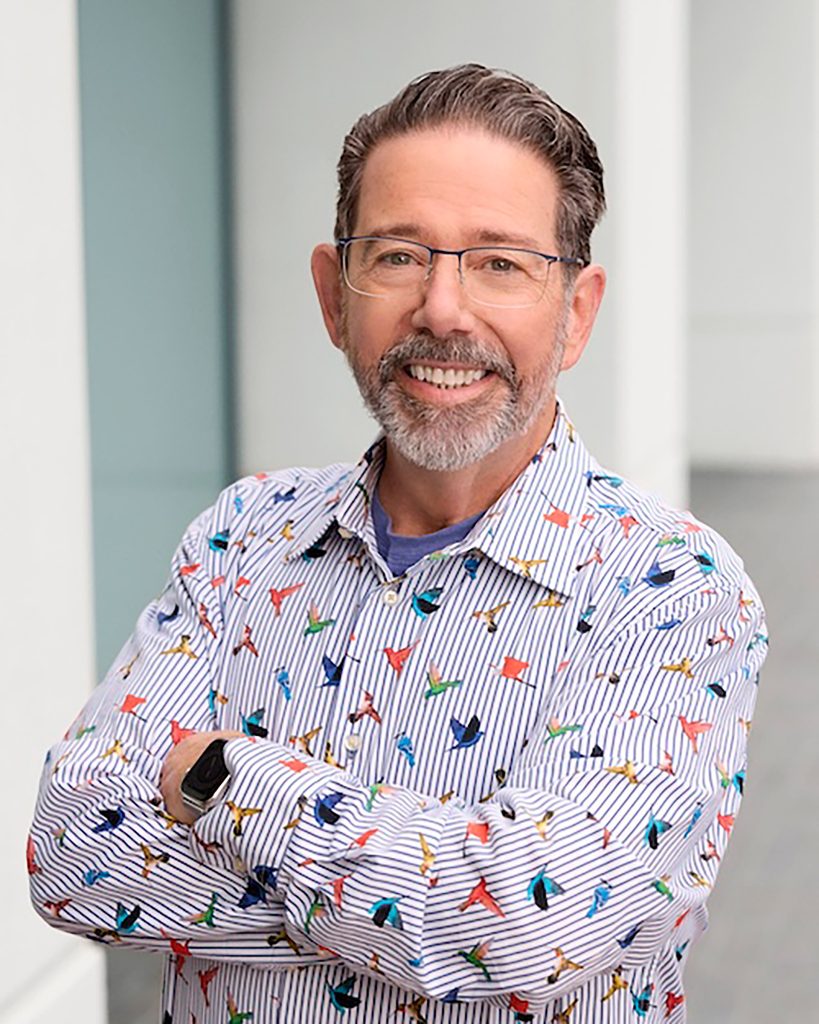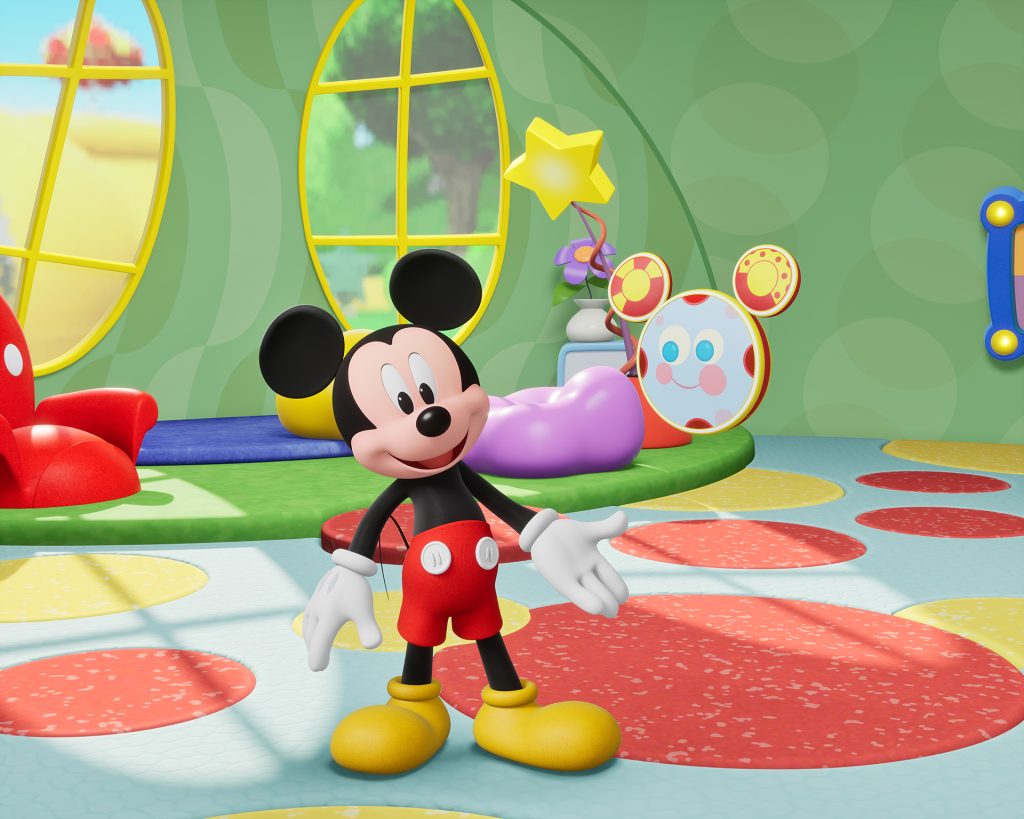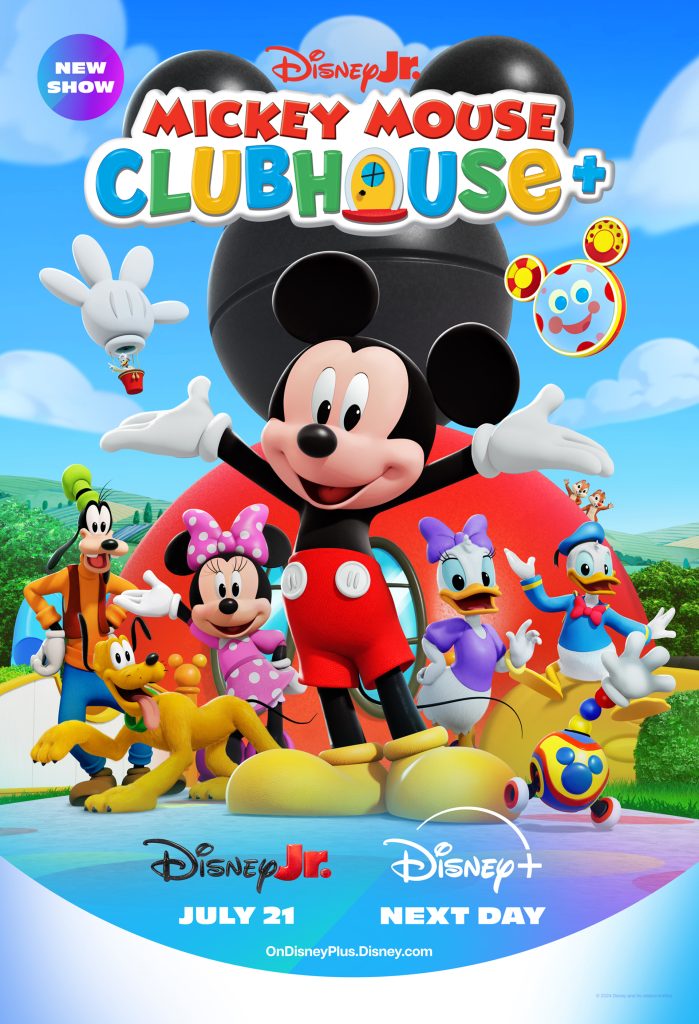Nearly 10 years after Mickey Mouse Clubhouse aired its last original episode, series executive producer Rob LaDuca still felt there were many more stories to tell. And with the global hit ranking among the top three streamed shows for preschoolers this year*, children and their parents seemed to agree.
So, LaDuca was thrilled when he got the chance to spend more time with Mickey and his pals in Mickey Mouse Clubhouse+, Disney Branded Television’s continuation of the beloved series, premiering Monday, July 21, on Disney Jr. and streaming the first 10 episodes on Disney+ and Disney Jr. On Demand the next day.
“We can really make it sing now,” the 36-year Disney TV Animation veteran said.
Together, LaDuca and co-producer/story editor Kim Duran (herself an experienced Disney scribe) explained the creative process of updating a beloved show for a new generation. While keeping its iconic characters true to their roots, they revealed the generous, collaborative spirit underpinning Disney’s connection with its audience, no matter their age.
Why is now the right time to revisit the clubhouse?
Rob LaDuca (RL): The popularity was still there. All these years later, kids still love Mickey Mouse Clubhouse. I’d been asking for years to bring the show back. Doing computer-generated animation on a show 18 years ago was a pretty tough task. Now the technology is available for better animation, to squash and stretch. Just when I thought I might be retiring, the opportunity arose. Well, I have to stay for that!
Kim Duran (KD): Mickey Mouse Clubhouse+ is the perfect title because it’s everything you loved about the original show, plus new characters, new music, new adventures, and improved animation. We plussed-up every level of the show.

Rob, did this feel like a homecoming of sorts for you?
RL: It really did. I’m a 30-some-odd-year TV Animation employee. I’ve worked on so many shows, but I always thought there were more Clubhouse stories to tell, more things I’d love to do with that show. Then it dropped into my lap. It’s been great.
What are the new elements to look out for in Mickey Mouse Clubhouse+?
KD: It’s not just Mickey who has his own clubhouse. Minnie, Daisy, Donald, and Goofy will get their own clubhouses, each reflecting their personality.
RL: Kim had the great idea to add Little Helper, which is a hand that comes from the side of the screen to help out. Kids will recognize themselves in this character. He’s like the preschoolers who want to help their parents and be involved but, of course, they make mistakes. The gang teaches Little Helper the proper way to do things when they go on adventures. He’s like R2-D2 but more expressive.
Watching Mickey Mouse Clubhouse is often a child’s first experience with Disney. Does that factor into the way you approach storytelling?
KD: The story needs to be relatable so kids understand the concept; it needs to be simple so they can follow along, and it needs to be fun for them. We keep the pacing at a level they can understand, and we include some teachable moments in there, too. We’ll touch on learning shapes and numbers, but mostly we focus on role modeling how to conduct yourself and how you befriend or support someone when they’re struggling. I think that’s the secret sauce to this show.

Do different generations react differently to the show?
RL: It’s been similar throughout the years. Kids relate to having a group of friends and working together. We hope that it helps kids to want to make friends with different personalities. In this group, there’s the wacky friend, a temperamental friend like Donald, and sweet friends like Minnie and Daisy. And Pluto is well loved by Mickey. We want to keep those relationships going. It makes me so happy because I loved Mickey as a kid, too.
What’s the creative process behind presenting such iconic characters?
KD: Our writers collaborate on story ideas and submit them to me and my fellow story editor Mark Drop. We’ll massage them: “Maybe a story works a little better for Daisy than Donald.” Then we submit those ideas to various network teams, some of which are focused on child development and education. They weigh in as the story moves along from idea to premise to outline to script. Rob is in the process with us the whole way, approving or tweaking stories.
RL: The storyline is usually in great shape, but I try to guide it visually. I’ll suggest reusing a motif or come up with new ideas for just a little more visual excitement.
What kind of child development feedback do you receive?
KD: They advise us if kids really don’t fully understand a concept. It’s important that we don’t lose our preschoolers’ attention. We always question ourselves to make sure we’re aligned on story goals so kids can remain focused. If we do have a tough concept for a kid, Mickey can turn to the camera and explain what it is before we continue.
How do you work with the songwriters to craft the songs?
RL: We have meetings every week to go over the songs and tweak lyrics. And then we get together when it’s time to lay in the score of the music track and work in bits of the songs that are going to be in the background during some of the mellower moments.
KD: It’s a collaborative process. The writers actually write lyrics and hand them off to our composer, Mike Himelstein, who was also on the original series. Sometimes it works better that way because writers know exactly what’s going on in a scene. Not all of us are amazing songwriters, so Mike finesses the words.
How did the show veterans and the newcomers mesh?
KD: The mix of old and new has really been helpful in moving the series forward. We have experience in the room; we have fresh voices; and then we have writers like me, who have worked on other Mickey shows and know the characters. We have the best of all worlds. I love my writing staff.
RL: The show veterans have the voices of the characters in their head. They’ll ask, “Would Minnie really say that? That’s more like a Daisy line.” Yet it helps to have a fresh vision. We all get checked a little bit sometimes.

Rob, what’s the experience of being with the company for over 30 years been like?
RL: It’s always been very collaborative. I came up from storyboarding, through directing and into executive producing. I’ve had my fingers in all kinds of aspects of production, and now it’s culminated in overseeing the sound and look of the show.
But nobody can do everything. It takes a village to do an animated project. I love that people sit around a table making little drawings and show them to everyone. We’ll pin them up and ask for ideas. It’s fun to work together. And now you can do that remotely. I hold my drawings up to the camera and I go, “How about this?”
What goes into designing a clubhouse for a particular character?
KD: A clubhouse represents an iconic piece of the character. Minnie’s clubhouse is a pink high-heeled shoe. Goofy’s clubhouse looks like his hat. We continue those themes inside. The interiors scream their personality. In Minnie’s clubhouse, I’ve never seen so many shades of pink.
RL: Minnie was easy. She’s into the arts, so there’s a stage to put on productions in her clubhouse. Donald was a sailor, so his clubhouse is shaped like a ship. Goofy dabbles in magic — sometimes poor magic — so everything’s funny in there. It’s been a lot of fun coming up with those ideas for the clubhouses.
How has streaming and technology impacted your approach to the show?
RL: We’re always thinking about how to use latest technology. Kids can take Mickey Mouse Clubhouse+ with them wherever they go, so we’re doing shorts specifically for that reason. Years ago, he would make an isolated appearance on a show or in a movie. Now, Mickey is out there.
Creatively, new technology is reflected in the show as well. There are no more dial-up phones. Mickey and Minnie have cell phones like kids do now. We keep up with the times and still stay true to the old school.
KD: We pay respect to the originality of the characters but update them so that they can have smartphones. Mickey still says, “Golly Gee.” He’s not going to say, “Awesome.”
RL: Mickey’s first words in a cartoon were “Hot Dog.” And he still says that almost 100 years later.

What have you heard from parents?
KD: Parents tell us not to change too much. They love it as it is. So, we didn’t take away anything, we just added to the characters and spaces and animation. But you would recognize everything as Clubhouse.
RL: The charm of the show is that kids feel like Mickey is their friend because he’s talking to them. The children participate in the show. Parents have told me that they love to look over and see their kids standing in front of the TV marching along or doing the “Hot Dog!” dance.
What do you hope the legacy of the show is?
RL: That kids love it and learn from it and enjoy it. That’s what it’s there for.
KD: Mickey is everybody’s best friend, and I hope he always will be.
*Source: YouTube Analytics (Lifetime – 4/2/25), views, all MMCH content posted on Disney Jr YouTube channel. Nielsen for Linear+Streaming Hours lifetime to 3/30/25 Live viewing for Streaming and L+7 for Linear. Mickey streaming rank based on 12/30/24-3/30/25.